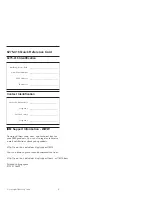
Chapter 2: Hardware Installation
6. Handle the system modules by the retention screws, eject levers, or the
module’s metal frame/faceplate only. Avoid touching the PCB boards
and connector pins.
7. None of the covers or replaceable modules should be removed in order
to maintain compliance with safety, emission, or thermal requirements.
8. Always secure every enclosure module by its retaining screws or make
sure it is held in place by its latches.
9. Always make sure the subsystem has a safe electrical earth connection
via power cords or chassis ground by the rack cabinet.
10. Be sure that the rack cabinet into which the subsystem chassis is to be
installed provides sufficient ventilation channels and airflow circulation
around the subsystem.
11. Provide a soft, clean surface to place your enclosure on before working
on it. Servicing the enclosure on a rough surface may damage the finish
of the chassis.
12. When working with the subsystem, it is important to use tools with
extreme care. Do not place tools or other items on top of the enclosure
to help avoid damaging the outward appearance of the chassis.
2.2.2 Static-free Installation
Static electricity can damage the system’s electronic components. To
prevent ESD damage to any of the components, follow these precautions
before touching or handling them:
Discharge the static electricity accumulated in your body by
wearing an anti-static wristband.
Avoid carpets, plastic, vinyl, and Styrofoam in your work area.
Handle all components by holding their edges or metal frames.
Avoid touching the exposed circuitry on PCB boards and connector
pins.
2.3
General Installation Procedure
Following all the instructions provided below can minimize subsystem
installation time. Detailed, illustrated instructions for each component are
given in the following sections.
General Installation Procedure
2-3
















































